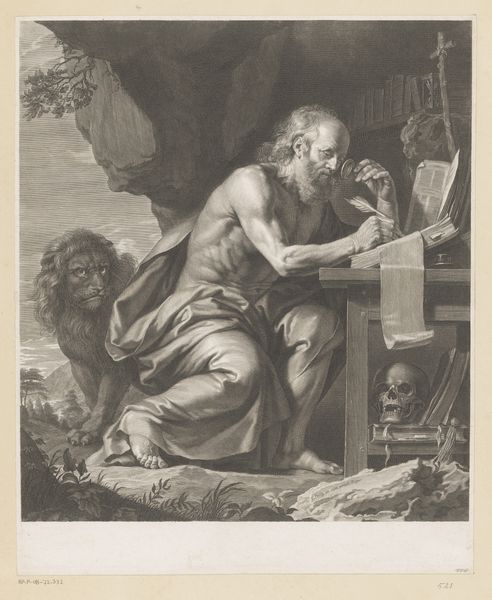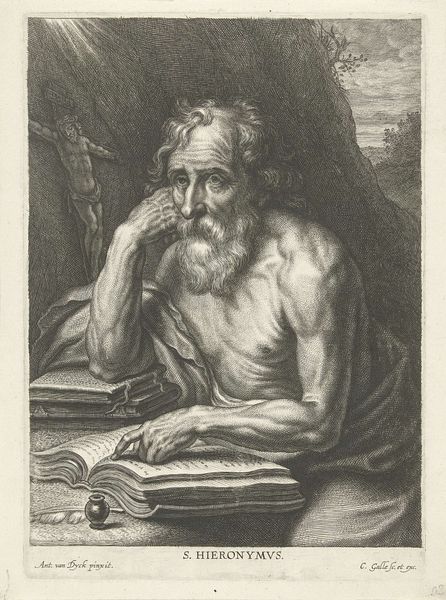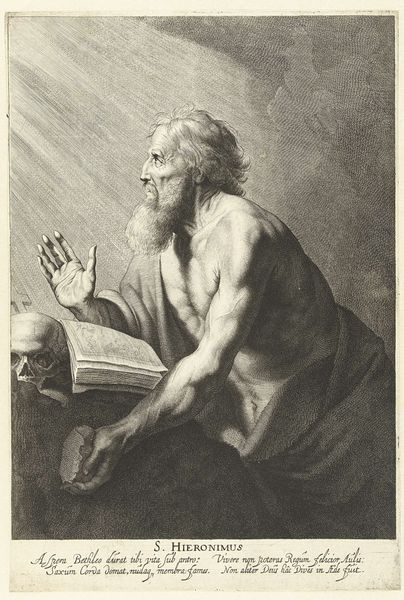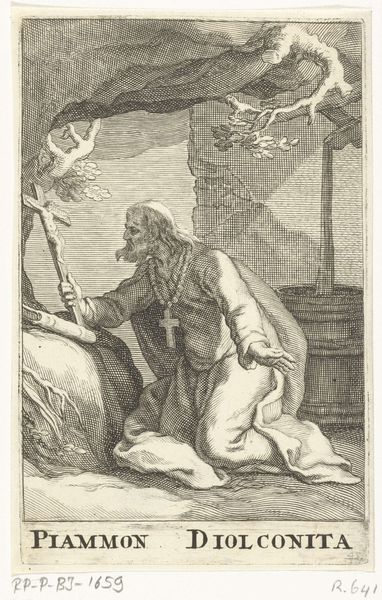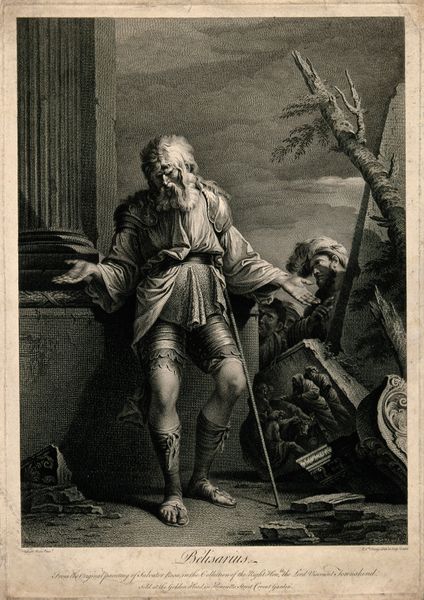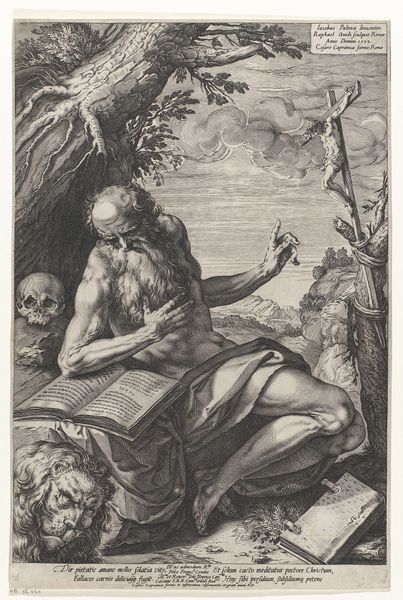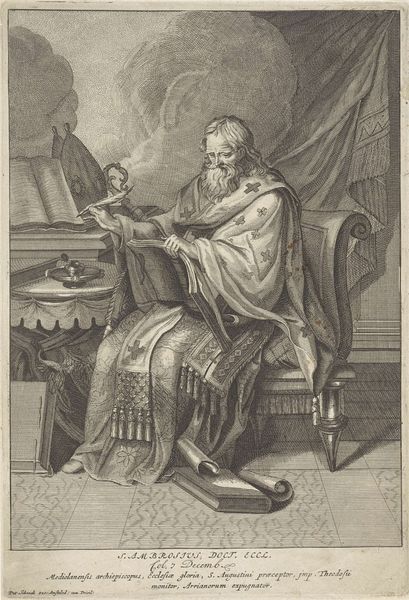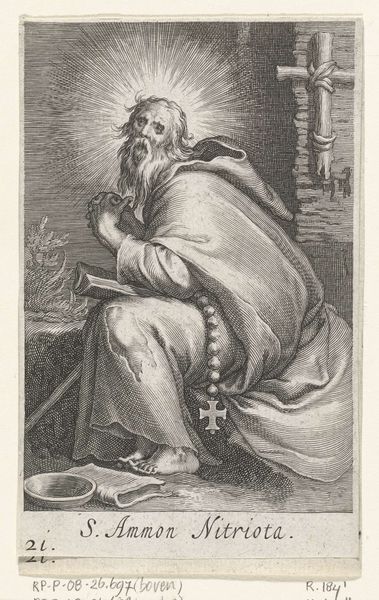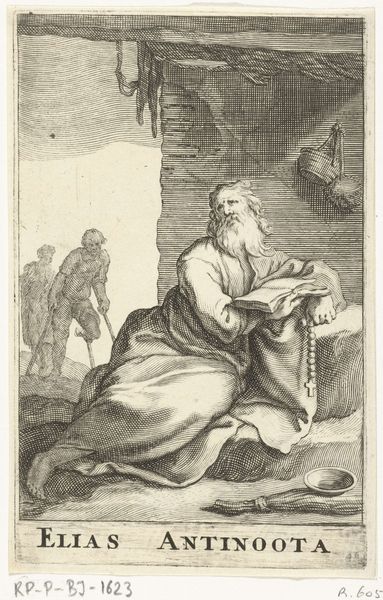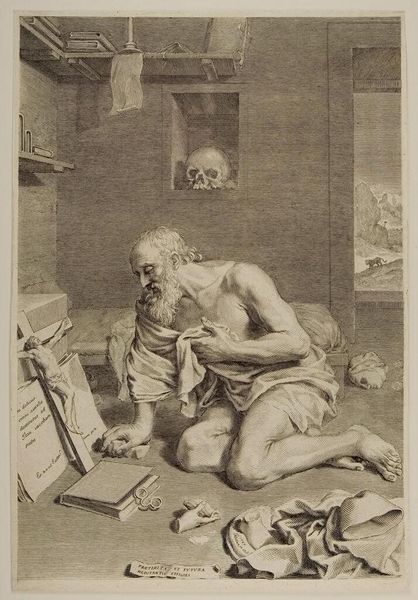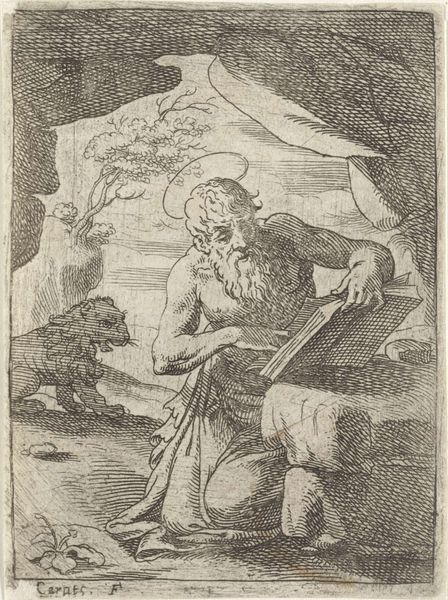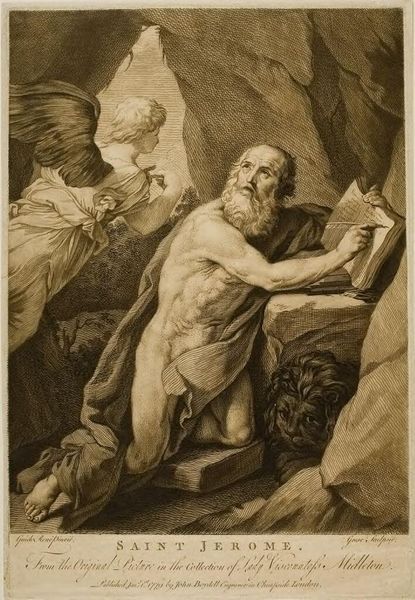
Dimensions: height 152 mm, width 106 mm
Copyright: Rijks Museum: Open Domain
This engraving of Saint Jerome was made in France around 1640 by Gérard Edelinck. It depicts Jerome, the translator of the Vulgate Bible, in his study, accompanied by a lion. The print participates in a long tradition of depicting learned figures in their studies, a subject which gained traction in the Renaissance. Here, the setting and attributes—the books, skull, and lion—speak to his life of scholarship and devotion. But we should ask, why this subject, and why now? Catholic imagery gained new prominence with the rise of the Counter-Reformation. Prints like this one helped spread particular ideas about piety, and the role of religious institutions, to a wider public. Edelinck had ties to the Royal Academy of Painting and Sculpture, which was founded to promote a certain style of art that would reflect the values of the monarchy and the Church. Understanding the institutional history of art helps us better understand its meaning. By consulting historical sources and archives, we can learn about the social and political forces that shaped the production and reception of this image.
Comments
No comments
Be the first to comment and join the conversation on the ultimate creative platform.
